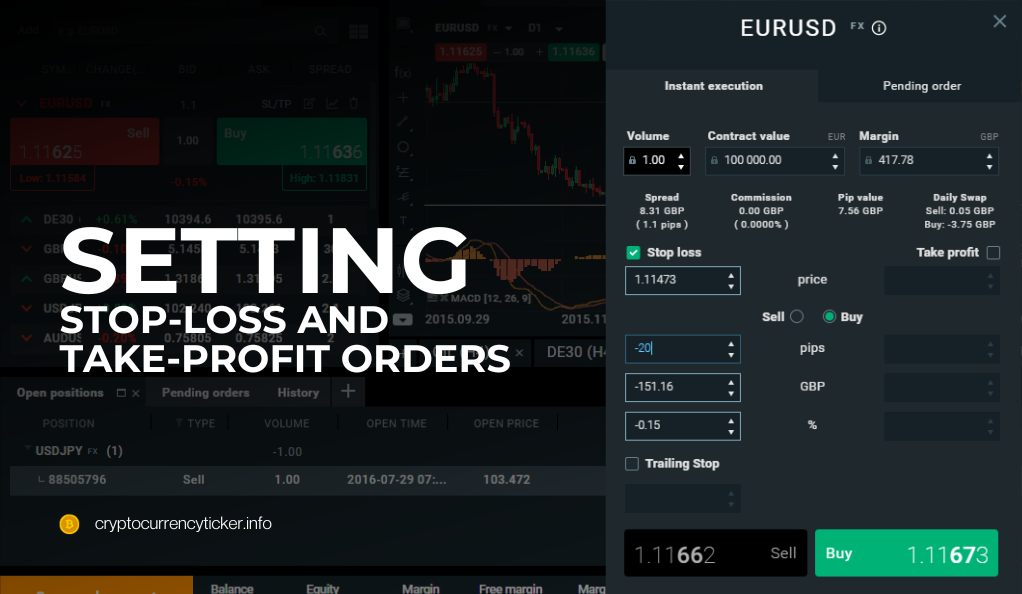Cryptocurrency markets have gained immense popularity in recent years, and with this surge in interest comes a wide range of trading strategies. One such strategy that has captured the attention of traders and investors is swing trading. In this section, we’ll introduce you to the concept of swing trading in the cryptocurrency market, explaining its fundamentals and why it has become a preferred approach for many.
Definition of Swing Trading in Cryptocurrency
Swing trading is a trading strategy that aims to capture shorter- to medium-term price movements within the cryptocurrency market. Unlike long-term investors who hold assets for years, or day traders who make rapid-fire trades within a single day, swing traders typically hold their positions for several days to weeks. The goal of swing trading is to profit from the “swings” or fluctuations in cryptocurrency prices that occur within these timeframes.
Swing traders look for opportunities to enter positions when they believe an asset’s price is poised to move in a specific direction, whether it’s an uptrend (bullish) or a downtrend (bearish). They analyze technical and fundamental factors to make informed decisions about when to buy or sell, with the aim of capturing a portion of the price movement.
Why Swing Trading is Popular in the Cryptocurrency Market
Swing trading has gained popularity in the cryptocurrency market for several compelling reasons:
- Volatility: Cryptocurrencies are known for their price volatility, with significant price swings occurring within short timeframes. Swing traders thrive on this volatility, as it provides ample opportunities to profit from price movements.
- Accessibility: Cryptocurrency markets are open 24/7, allowing swing traders to participate at their convenience. This accessibility is especially appealing to those who can’t commit to full-time day trading.
- Reduced Emotional Stress: Swing trading allows traders to make decisions with less pressure compared to day trading, where split-second decisions are crucial. This reduced stress can lead to better decision-making.
- Technical Analysis: Swing traders heavily rely on technical analysis, which involves studying price charts, patterns, and indicators. The cryptocurrency market’s transparency and availability of historical data make it conducive to technical analysis.
- Diversification: Swing trading allows traders to diversify their portfolios by taking positions in different cryptocurrencies. This diversification can help spread risk and increase the potential for profits.
- Potential for Profits: By capturing intermediate price movements, swing traders can potentially profit both in bullish and bearish market conditions. They don’t rely solely on a market’s upward trajectory for success.
| Aspect | Description |
|---|---|
| Strategy | Swing trading offers advantages and risks; success requires effective strategies and risk management. |
| Risk Management | Key risk management techniques include setting stop-loss orders, determining proper position sizes, and having a well-thought-out trading plan. |
| Target Market | Cryptocurrency swing trading, suitable for both novice and experienced traders. |
| Purpose | To provide valuable insights and guidance for navigating cryptocurrency swing trading. |
Getting Started with Swing Trading
Before diving into cryptocurrency swing trading, it’s essential to lay the groundwork for a successful trading journey. In this section, we’ll walk you through the necessary steps to begin your swing trading adventure.
Setting Up a Cryptocurrency Trading Account
To start swing trading cryptocurrencies, you’ll need a trading account on a reliable cryptocurrency exchange. Follow these steps to get started:
- Research and Choose an Exchange: There are numerous cryptocurrency exchanges available, each with its own features, fees, and supported assets. Research and select an exchange that aligns with your trading preferences.
- Create an Account: Sign up on the chosen exchange by providing the required personal information, including your name, email address, and identity verification documents.
- Fund Your Account: Deposit funds into your trading account using your preferred payment method, such as bank transfers, credit/debit cards, or cryptocurrency deposits.
- Security Measures: Enable two-factor authentication (2FA) and other security features to protect your account from unauthorized access.
- Choose a Wallet: Consider using a cryptocurrency wallet for added security. While exchanges offer wallets, it’s advisable to store your assets in a private wallet, which provides greater control over your funds.
Understanding Technical Analysis
Technical analysis is fundamental to swing trading, involving the examination of historical price charts and the utilization of various indicators for informed trading decisions. Candlestick patterns, such as doji, hammer, and engulfing patterns, offer valuable insights into price movements. Moving averages, including simple moving averages (SMA) and exponential moving averages (EMA), assist traders in recognizing trends and potential reversals.
Additionally, the Relative Strength Index (RSI), an oscillator, gauges the speed and change of price movements, aiding in the identification of overbought and oversold conditions that serve as valuable entry and exit signals. These components form the core of technical analysis in swing trading, enabling traders to make more informed choices.
Fundamental Analysis in Swing Trading

While technical analysis plays a significant role in swing trading, it’s also important to consider fundamental analysis. This involves evaluating the underlying factors that can influence cryptocurrency prices, such as:
News and Events: Stay informed about cryptocurrency-related news, regulatory changes, partnerships, and technological developments. These can have a significant impact on market sentiment and price movements.
Market Sentiment: Monitor social media, forums, and sentiment analysis tools to gauge the overall sentiment of the cryptocurrency community. Positive sentiment can drive prices higher, while negative sentiment can lead to selloffs.
Project Fundamentals: Research the fundamentals of the cryptocurrencies you intend to trade. Understand the technology, team, use case, and adoption potential of each asset.
Essential Swing Trading Strategies
Now that you’ve established a foundation for cryptocurrency swing trading, it’s time to explore the essential strategies that can help you navigate the dynamic crypto market successfully. These strategies are designed to capture price movements and maximize your trading opportunities.
Trend Trading
Trend trading is a popular strategy among swing traders, focusing on identifying and following prevailing price trends. Here’s how to effectively employ trend trading:
- Identifying Trends: Use technical analysis tools like moving averages to identify trends. An uptrend consists of higher highs and higher lows, while a downtrend has lower highs and lower lows.
- Using Trendlines and Channels: Draw trendlines on your price charts to visualize trend direction. Channels, which encompass both upper and lower trendlines, provide a clear channel within which prices move.
Support and Resistance Trading
Support and resistance levels are crucial zones for swing traders, acting as either price barriers to breach or bounce off. Recognize these levels, whether horizontal or diagonal, using historical price data. When prices approach them, watch for breakout or pullback opportunities. Breakouts signal potential trend continuations when prices breach levels, offering entry points, while pullbacks provide another chance to enter positions when prices retrace to these levels. Monitoring and trading around these levels empower swing traders to make more informed decisions.
Moving Average Crossovers
Moving average crossovers are a simple yet effective swing trading strategy. It involves using two moving averages with different periods to identify potential entry and exit points:
Selecting Moving Averages: Choose two moving averages with different timeframes, such as a shorter-term and a longer-term moving average.
Entry Signals: When the shorter-term moving average crosses above the longer-term moving average, it generates a bullish signal, indicating a potential uptrend. Conversely, a cross below suggests a bearish signal.
RSI Divergence Trading
The Relative Strength Index (RSI) is a valuable tool for swing traders, highlighting RSI divergence as a critical concept where RSI readings diverge from price movements, potentially indicating a forthcoming trend reversal. Bullish divergence, with RSI forming higher lows as prices make lower lows, hints at an upward reversal, while bearish divergence, with RSI recording lower highs as prices create higher highs, suggests a possible downward reversal. To bolster the reliability of RSI divergence signals, confirm them with other technical indicators or chart patterns, enabling swing traders to make more confident and informed market decisions.
Trading with Fibonacci Retracement Levels
Fibonacci retracement levels are based on a sequence of numbers and ratios that often act as support and resistance levels. Swing traders use these levels for potential entry and exit points:
- Drawing Fibonacci Levels: Identify significant price swings on your chart, and apply Fibonacci retracement tools to these swings. Common retracement levels are 38.2%, 50%, and 61.8%.
- Entry and Exit Points: Look for price reactions at Fibonacci levels. A bounce off a Fibonacci retracement level can be a strong signal for a swing trade.
Risk Management and Position Sizing
Successful cryptocurrency swing trading is not just about finding the right strategies; it’s also about managing risk effectively and determining the appropriate position sizes for your trades. In this section, we’ll delve into the essential principles of risk management and position sizing to safeguard your trading capital.
Setting Stop-Loss and Take-Profit Orders

Stop-loss and take-profit orders are crucial tools for risk management in swing trading. They help you define the maximum loss you’re willing to accept and secure profits when the market moves in your favor:
- Stop-Loss Orders: Determine a predetermined price level where you’ll exit a trade to limit losses. This level should be based on technical analysis, such as support/resistance levels or moving averages.
- Take-Profit Orders: Set a target price level at which you’ll exit the trade to lock in profits. Like stop-loss orders, take-profit levels should be based on technical analysis and your trading strategy.
Calculating Position Size
Position sizing is the process of determining how much of your trading capital to allocate to a specific trade. Proper position sizing is crucial for managing risk and preserving your capital. Here’s how to calculate it:
Risk Percentage: Decide the percentage of your trading capital you’re willing to risk on a single trade. A common rule of thumb is to risk no more than 1-2% of your capital on a single trade.
Stop-Loss Distance: Determine the distance between your entry point and the stop-loss level in terms of price. This is the potential loss per share.
Position Size Formula: Use the following formula to calculate your position size:Position Size = (Risk Percentage / Stop-Loss Distance) * Capital
Managing Risk with Proper Capital Allocation
Diversifying your trading portfolio is vital for effective risk management. Avoid putting all your capital into a single trade or asset. Instead, allocate your capital across various cryptocurrencies to spread risk and mitigate the impact of one asset’s poor performance. Additionally, be mindful of the correlation between assets in your portfolio; positive correlation means they move together, while negative correlation suggests opposite movements. Periodically review and rebalance your portfolio to align it with your risk tolerance and trading objectives.
Developing a Swing Trading Routine
Consistency and discipline are key to successful swing trading in the cryptocurrency market. In this section, we’ll guide you through the process of developing a structured routine to keep your trading organized and your emotions in check.
Creating a Trading Plan
A well-defined trading plan is the foundation of a successful swing trading routine. Your trading plan should include the following elements:
- Clear Goals: Set specific, achievable trading goals, such as target returns and risk tolerance levels.
- Trading Strategies: Document the swing trading strategies you plan to use, along with the criteria for entering and exiting trades.
- Risk Management Rules: Outline your risk management rules, including the maximum percentage of capital you’re willing to risk per trade.
- Timeframes: Specify the timeframes you’ll trade (e.g., daily, weekly) and the hours you’ll dedicate to trading activities.
- Asset Selection: Define the cryptocurrencies you’ll trade and any criteria for selecting them.
- Record Keeping: Establish a system for keeping detailed records of your trades, including entry and exit points, trade size, and results.
Time Management and Monitoring
Efficient time management is essential for a well-rounded swing trading routine. Establish dedicated trading hours to prevent overtrading, and make use of automated alerts and trading platforms for continuous monitoring of open positions and market movements. Stay informed about relevant news and events that could impact your traded assets, such as regulatory changes or significant partnerships, to make informed trading decisions.
Emotional Discipline and Psychology
Maintaining emotional discipline is a significant challenge in swing trading. To stay in control, stick unwaveringly to your trading plan, even amidst market fluctuations and emotional impulses. Avoid the temptation of revenge trading after a loss, as emotional decisions often result in further losses. Embrace losses as an integral part of trading, learning, and improving from them. Cultivate a positive and patient mindset, recognizing that successful swing trading demands a long-term perspective.
Tips for Success in Cryptocurrency Swing Trading
Achieving success in cryptocurrency swing trading requires more than just a solid strategy. It involves adopting a proactive approach, staying informed, and continually improving your skills. Here are some valuable tips to enhance your swing trading journey:
Keeping Up with Market News and Events
To stay informed in cryptocurrency swing trading, regularly follow news sources, social media, and forums for market updates and regulatory changes. Utilize economic calendars to track significant events like product launches and earnings reports affecting cryptocurrency prices. Keep an eye on market sentiment through sentiment analysis tools, as it can sway price movements, reflecting the collective sentiment of traders and investors.
Learning from Past Trades
- Keep Detailed Records: Maintain comprehensive records of your past trades, including entry and exit points, reasons for the trade, and outcomes. This helps you identify patterns in your trading behavior.
- Post-Trade Analysis: After each trade, conduct a thorough post-trade analysis to evaluate what went well and what could have been improved. Learning from both successes and losses is essential for growth.
- Adjust Strategies: Adapt your strategies based on the insights gained from your trade history. Avoid repeating the same mistakes and refine your approach over time.
Staying Adaptable in a Volatile Market

Adapt to Market Conditions: Cryptocurrency markets can be highly volatile. Be prepared to adjust your strategies and risk management techniques to suit changing market conditions.
Practice Patience: Swing trading requires patience. Avoid impulsive decisions based on short-term price fluctuations, and stick to your well-defined trading plan.
Diversify Wisely: While diversification can mitigate risk, avoid overextending yourself. Diversify within your means and ensure you have a good understanding of the assets you trade.
Continuous Learning: The cryptocurrency market is evolving. Invest time in continuous learning, attend webinars, read books, and stay updated with the latest trading techniques and tools.
Common Pitfalls and Mistakes to Avoid
Even with the best strategies and intentions, cryptocurrency swing trading can be challenging, and there are common pitfalls and mistakes that traders often encounter. Being aware of these pitfalls and actively avoiding them can significantly improve your trading performance. Here are some of the most common mistakes to steer clear of:
- Overtrading: Overtrading, driven by short-term market fluctuations, increases costs and risk. To avoid it, stick to your plan, set trade frequency limits, and resist emotional or FOMO-driven trades.
- Ignoring Risk Management: Not using stop-loss orders can lead to substantial losses in adverse trade situations. To mitigate this risk, consistently employ stop-loss orders, setting levels based on technical analysis and risk management principles.
- Emotional Decision-Making: Fear and greed can lead to impulsive trading decisions. Stick to your trading plan to maintain emotional discipline and avoid hasty choices driven by these emotions.
Conclusion
Swing trading in the cryptocurrency market offers a dynamic and rewarding avenue for traders seeking to profit from price fluctuations within shorter to medium-term timeframes. Armed with an understanding of essential strategies, risk management techniques, and the importance of a well-structured routine, you can navigate the volatile crypto landscape with confidence.
Successful swing trading requires a blend of technical and fundamental analysis, emotional control, and a commitment to learning. Despite challenges and pitfalls, a thoughtful approach and continuous improvement can lead to success. Whether you’re a novice or experienced trader, cryptocurrency swing trading offers growth, adaptation, and potential rewards. Equip yourself with knowledge, refine your strategies, and embark on this trading adventure with enthusiasm and determination.
